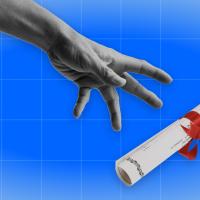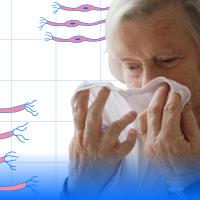There is a shadow cast over Dylan Beynon’s family.
“I grew up with a family just annihilated by mental illness,” Beynon says. There is a history of schizophrenia; his mother was an addict who spent 15 years homeless before dying of a fentanyl overdose. The pain is immediate and intimate.
“And through those experiences, I came to really prioritize my own mental health and wellbeing, because I was so afraid of falling into the path she fell into,” Beynon says.
It appeared to be working. Beynon achieved academically, had friends, had a partner, and yet … he was deeply unhappy.
“I did not have a positive relationship with other people and the world around me,” Beynon says.
While searching for something to help, he found an option that some clinical data showed outperformed traditional treatments: ketamine therapy.
Beynon is now the founder and CEO of Mindbloom, a startup which seeks to make ketamine therapy more accessible by providing physician prescribed drugs, kits including masks and journals, and guides, making the treatment available in the home, rather than at clinics.
It’s another step toward expanded clinical use for a drug that is as crucial on battlefields as it is in vet offices.
A Brief History of Ketamine
“Ketamine is, like, utterly fascinating for a lot of reasons,” Beynon says. “But its history is one of the most interesting parts about it.”
Ketamine was first synthesized in 1962. Developed as an anesthetic — for both humans and, more famously, animals — the drug, despite its clubby reputation, is useful and important in medicine.
Anesthesia, as critical as it can be, carries risks that can be pretty significant — that’s why there’s a whole medical speciality dedicated to the planning and administering of them. In this powerful class of drugs, which can cause permanent damage or death when used incorrectly, ketamine stands out for its relatively safe profile.
The drug does not suppress breathing and blood pressure as much as other anesthetics, and has a wider margin for error in dosing. This makes ketamine ideal for use in chaotic situations like war zones and for children, earning it a place on the World Health Organization’s essential medicines list, drugs that the organization considers the bare essentials for any health system.
But ketamine also has a bizarre quirk: when it is taken at lower doses, below the anesthetic threshold, it becomes a powerful psychedelic, giving it a second life on drug world dance floors.
It can cause a feeling of detachment from the self and reality, in trips generally lasting for 30-60 minutes.
The short duration and low dosage makes it a popular alternative to similar drugs like PCP.
In 2000, Yale’s John Krystal discovered another surprising ketamine ability: it was a potent and fast-acting antidepressant. It was so potent and fast-acting, in fact, that it rightly took years for researchers to accept what the clinical data was showing, Krystal previously told Freethink.
In the two decades since, ketamine therapy has emerged as a promising option for treatment-resistant depression, joining other psychedelics like psilocybin (one of the key compounds in magic mushrooms) and MDMA-assisted therapy.
A New Class of Antidepressant
Traditional antidepressants can and do work in the treatment of depression. The problem is that they do not work well enough for many patients, and sometimes not at all for others. Patients who begin a new antidepressant may have a 10-20% chance of response, Krystal previously told Freethink.
In comparison, ketamine produces response rates in 50-80% of patients, and it does so far faster, within days. Traditional antidepressants need to be taken daily, and often for weeks for their effects to begin.
When it comes to why ketamine is such an effective depression treatment, well… we don’t really know. In fact, there’s a lot of drugs whose exact mechanisms of action are unknown, but researchers are currently trying to tease out what is going on in that complex neuropharmacology. If the key to the speed of ketamine therapy is discovered, we may be able to use that knowledge to create new fast-acting antidepressants.
We may not know exactly what is going on, but there are theories about what impact ketamine is having on the brain that may be behind its mental health benefits.
Traditional antidepressants influence neurotransmitters, signaling chemicals like serotonin, which we know play a role in how our brains work. But ketamine seems to be working on the brain in a different way, in part by causing it to regrow synaptic connections, animal data suggests.
These restored connections may be increasing the plasticity of the brain, allowing us to lay down new neural pathways.
Ketamine is not a silver bullet and not without risks of its own, however; it does have the potential for abuse, as years of recreational use have shown.
Since the discovery of ketamine therapy for depression, the drug’s been looked at as a possible treatment for other conditions as well, including OCD, PTSD, and alcoholism.
But the strongest research supports ketamine therapy as a depression treatment, and there’s one thing the drug has going for it that gives it an advantage over other psychedelic therapies.
“And because it was FDA approved in 1970 as a safe, efficacious medicine, that means today it is legally prescribable,” Beynon says.
Ketamine Therapy
Because of that basic legality and the increasing acceptance of ketamine’s potential as a depression treatment, ketamine therapy clinics have begun popping up around the country.
These typically provide ketamine infusion therapy. After medical and mental health screening and sessions with therapists designed to prepare patients for their trips, they receive an infusion of ketamine and go through their psychedelic experience.
“People should expect to feel an alteration in their consciousness that may feel quite profound,” Melanie Malloy, clinical director of Ember Health’s Brooklyn Heights clinic, previously told Freethink.
“They may feel detached from reality, they may stop feeling that they are in their bodies. They will almost certainly feel a distortion of their time sense, a distortion of place, so that sometimes people feel like they’re underground, or underwater, or in space, or having a very vivid recollection of their childhood home.”
Mindbloom patients take physician-prescribed ketamine at home, after preparation sessions. Once the sublingual ketamine is administered, guided music and meditation helps patients through their experience.
The research thus far suggests that the trip alone is not enough for lasting mental health benefits.
Integration sessions, where patients can talk through their experiences, analyze what they’ve learned about themselves, and figure out how to carry those changes into their life, are crucial to psychedelic therapy’s efficacy — something that seems to hold true across other psychedelics, as well.
Mindbloom’s ketamine therapy offerings are taken in the home, with clinician-prescribed remote integration sessions held every 1-2 weeks.
The Future of Mental Health
As the rules and regulations around psychedelics loosen, psychedelic therapy is moving from scientific research to a clinical industry, with the potential to impact actual patients.
“Psychedelic therapy, for me, helped catalyze a fundamental transformation, where I was able to connect with other people, connect with humanity as a whole, and shift from being a pessimist to an optimist,” Beynon says.


